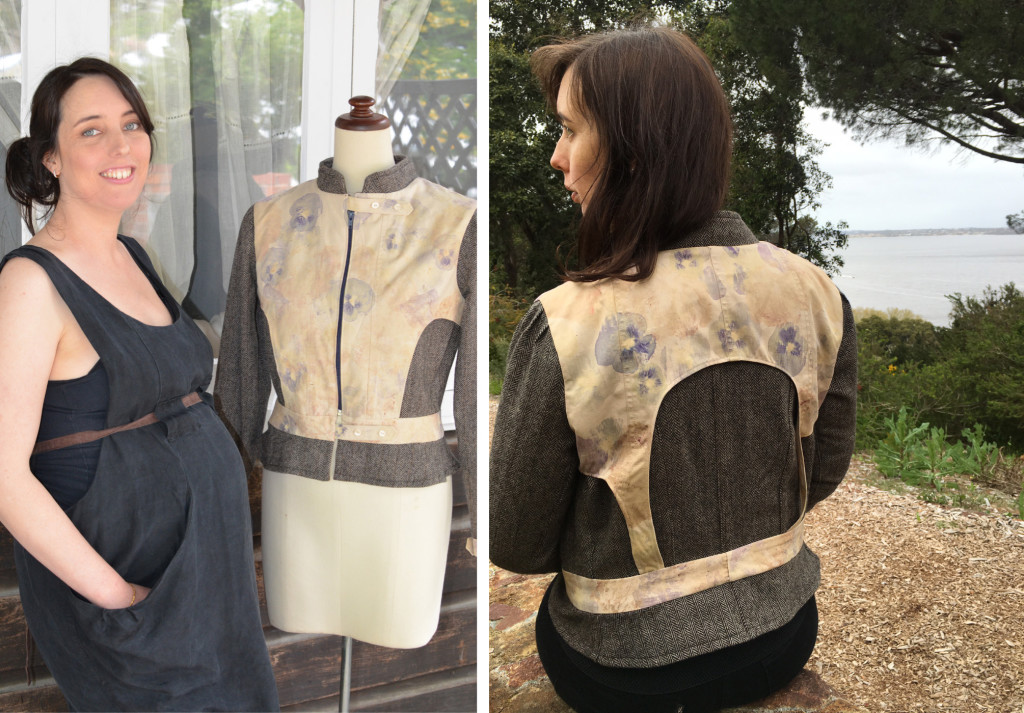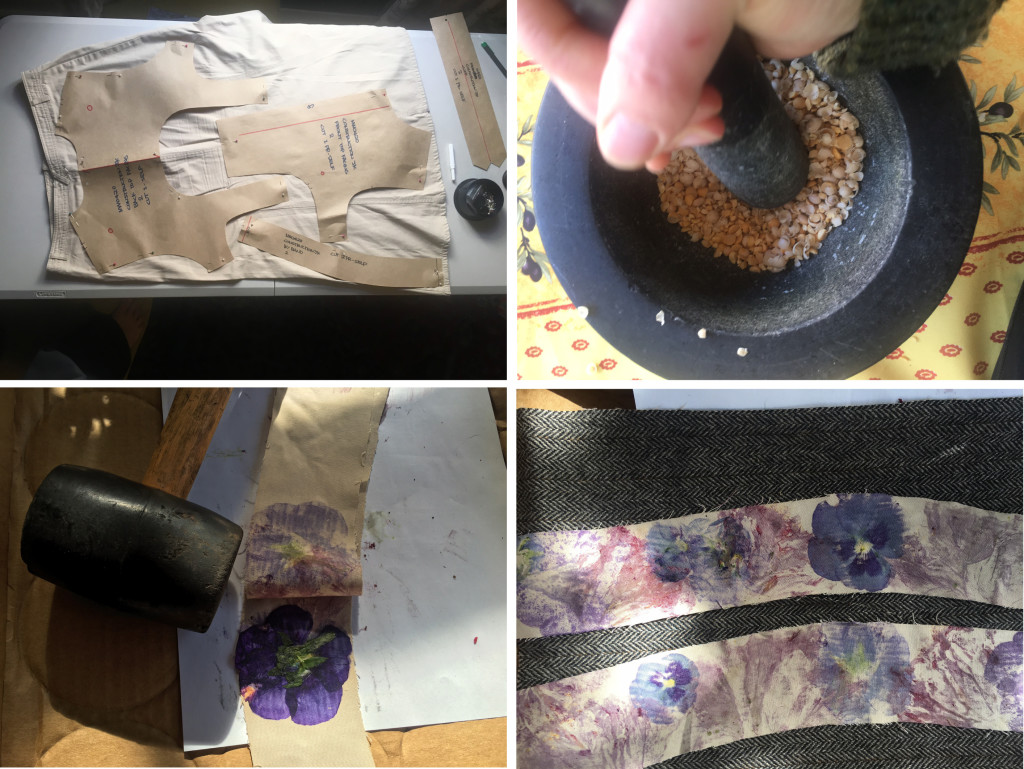Having once been a part of the fashion scene, West Australian maker Jemma Edwards is uniquely placed to comment on contemporary clothing culture which she left behind a decade ago due to the influx of poorly made cheap alternatives.

Jemma Edwards created a jacket embellished with bespoke floral prints for The Slow Clothing Project.
Now she loves the concept of slow clothing and the majority of her wardrobe is second-hand clothing, handmade or vintage, with only about 30 percent being purchased new. “Slow clothing fits very well into my current art practice,” Jemma said.
In keeping with Textile Beat’s Slow Clothing Manifesto (think, natural, quality, local, care, few, make, adapt, revive and salvage), Jemma advice is this: If you are buying something new, try to buy good quality because that will last the distance and always aim for ethically sourced goods.”
“By supporting handmade, you not only get to enjoy the bespoke and unique but are also helping support and grow knowledge of craftsmanship that has been around for hundreds of years.
“Don’t buy for the sake of buying. When buying toys for my children, I try to buy things that are good quality and will last. I don’t buy much processed food, I tend to buy whole, raw ingredients and use them to make food from scratch.
“For many people the act of making gives them a chance to slow down and draw breath in our fast-paced world. It is a way to be more mindful of the little things in life and has the ability to help people’s mental health.”
Jemma first learned to sew in primary school on our old treadle machine with help from her Mother, Grandmother and Nanna. After completing school, she went on to do a Bachelor of Arts – Visual Arts majoring in Textiles as well as a private dressmaker’s course.
“I have sewn a huge range of clothing from basic patterns, upcycled clothing through to directional men’s and women’s wear and a number of wedding dresses,” Jemma said.
“From 2000 to 2005, I worked as a fashion designer first for the labels (Breathless and Selth) and then started my own label Ngami with Chris Cullen. After being burnt out with competing against a growing influx of cheap Chinese clothing it was time to move on. “
The garment Jemma made for The Slow Clothing Project is a jacket pattern she used on her last collection for Ngami in 2005. One of her personal jackets from that final collection was looking worn and so she made a replacement.
“The jacket has been made from a cream cotton drill skirt I found at an op-shop and a piece of tweed remnant gifted to me by Kath Gardiner whose mother was once a skilled dressmaker. To get some colour and pattern into the garment I chose to use a technique called Hapa-zome created by India Flint. I first soaked my cloth in a soya milk mordent and then used a combination of petunias and pansies which were beaten on to the cloth. This has left a purple blue floral pattern on my jacket,” she said.
“I love the act of making and owning garments that fit well and are made well. It makes me feel good. I find a lot of fast fashion is poorly cut and made and it doesn’t last. I am also a lover of natural fibres and find that women’s clothing is full of synthetics, which feel horrible on and are no good for our environment. Having worked in fashion for many years, I feel there is a huge amount of waste and try hard not to consume as much.”
So what is Jemma’s advice for beginner makers? “Just give it a go and start making. Often your best work can come from a run of what you think are mistakes.”
So true Jemma. We celebrate imperfection and so-called ‘mistakes’ because of the creative problem solving they generate.
